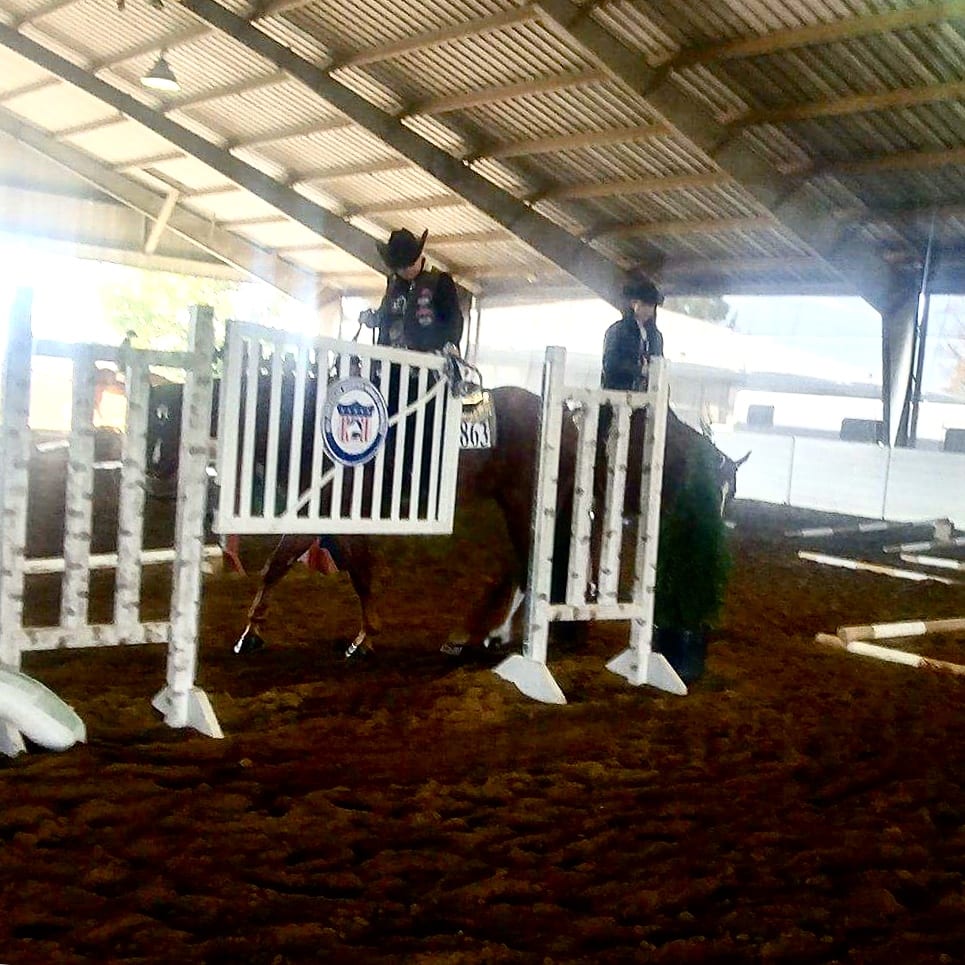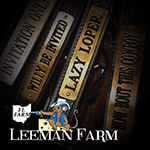The prestigious split arena of the Celeste Center at the All-American Quarter Horse Congress during the highly competitive trail classes is a beautiful sight. Colorfully painted poles and perfectly placed obstacles are almost as impressive as the fashionable riders and gorgeous horses that ride them.
However, there is an immense amount of thought, planning and physical labor that goes into the artistry of creating, setting and maintaining these courses throughout the show. Starting with a blank canvas, Course Artist, Tim “The Trail Man” Kimura, submits two hand drawn designs of trail patterns months before the Congress.
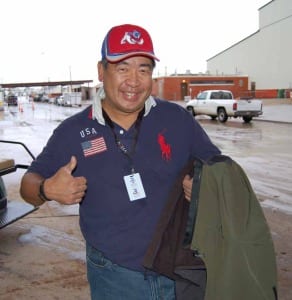 From there, a committee selects which courses will be used. When asked what he first considers when dreaming up a fresh pattern, Tim responds with, “Level of competition – you have to know the people and horses you are drawing for.”
From there, a committee selects which courses will be used. When asked what he first considers when dreaming up a fresh pattern, Tim responds with, “Level of competition – you have to know the people and horses you are drawing for.”
There are several factors and details that he must take into consideration that many may not know about. For example, he states, “I have to contemplate the size of the course as there are two courses to fit in the Celeste arena. I have to think about the enter and exit spots so that there is no traffic.”
The judges also need a clear line of sight to the obstacles. Kimura explains, “In the Celeste Center, the judges are always on the left side. I want to design an interesting course where the obstacle remains in vision of the judge.”
Other little-known details of drawing is how Tim takes into consideration the warm up pens when drawing the actual competition patterns.
“The speed of the course is important but I have to think about the warm up pen too. I can’t have the pattern cross over lines too many times because the exhibitors would be running all over and into each other in the warm up pen.”
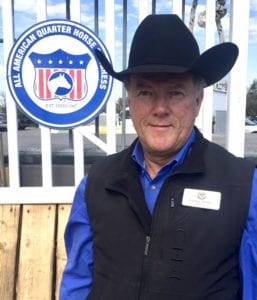 Once the courses are chosen by the committee, the Course Coordinator, George Seanor, is responsible for setting the pattern correctly; how high the poles will be; and what the decorations look like.
Once the courses are chosen by the committee, the Course Coordinator, George Seanor, is responsible for setting the pattern correctly; how high the poles will be; and what the decorations look like.
Seanor starts with the rulebook. “Certain obstacles are required by AQHA, so we start there.”
And like Kimura, he has to take into consideration the various levels of horse and riders and classes.
Seanor explains, “I want to match the obstacles to the level of the horses and riders so that they can showcase the best of their abilities.”
The biggest challenge Seanor finds is spacing. “Fitting a course that needs to be the quality of the American Quarter Horse Congress into the venue is difficult. We need it to be safe and we have to consider how to give the exhibitor the best opportunity for success. Then, we think about decorating.”
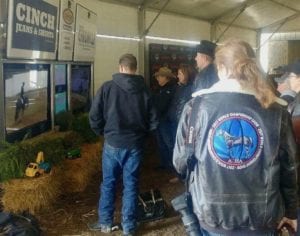 As for the beauty of the course, George and his committee match poles of color and prints the design on paper the night before the competition. “We match flowers and flower boxes to have the best aesthetics. We want it to look top quality. It’s the Congress.”
As for the beauty of the course, George and his committee match poles of color and prints the design on paper the night before the competition. “We match flowers and flower boxes to have the best aesthetics. We want it to look top quality. It’s the Congress.”
His enthusiasm is definitely exhibitor driven. With Trail entries reaching 1,250 this year that is a lot of people to try and satisfy, but Seanor made that his goal. “I consider that we want to get all of these people a chance to practice on the course as well as show all within two weeks. And trail classes at the Congress grow every year.”
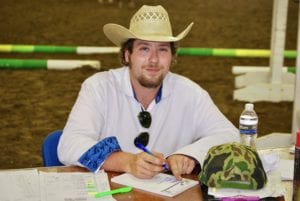 Up and coming Course Designer, Carson Griggs, is new to the trail industry, but he is ready to learn. This year he participated in the trail demonstration given by Tim Kimura and set up the courses in the early morning hours at the Congress.
Up and coming Course Designer, Carson Griggs, is new to the trail industry, but he is ready to learn. This year he participated in the trail demonstration given by Tim Kimura and set up the courses in the early morning hours at the Congress.
“I’ve been studying the great trail designers, Tim Kimura, Robert Dehn, EJ Alison, Don Lehman, Mike Christensen, Robert Barton and George Seanor. It’s important not to take information from one source. Everyone has their own style,” he explains. In developing his own style, Griggs considers distinctiveness. “I like the challenge of making an obstacle unique – one that you can go through it two times in a different way. It takes critical thinking.”
Griggs states, “I think it is the ultimate combination of teamwork between a horse and rider. Not only do you have to put your horse in the right spot, but your horse has to buck up as well.”
Thanks to all the trail experts that were willing to give us the behind the scenes scoop on the process of designing trail courses in a challenging venue like the Congress.
About the Author – An AQHA Professional Horseman, Mo West, currently lives in Danville, California. Formerly a high school English teacher for over 15 years, she now pursues her passion. As assistant trainer at Busick Quarter Horses, she enjoys training and coaching. She is an avid world traveler and loves boats and the water. Fishing is her second favorite activity and she always has her beloved dog, Crash at her side whenever possible.


